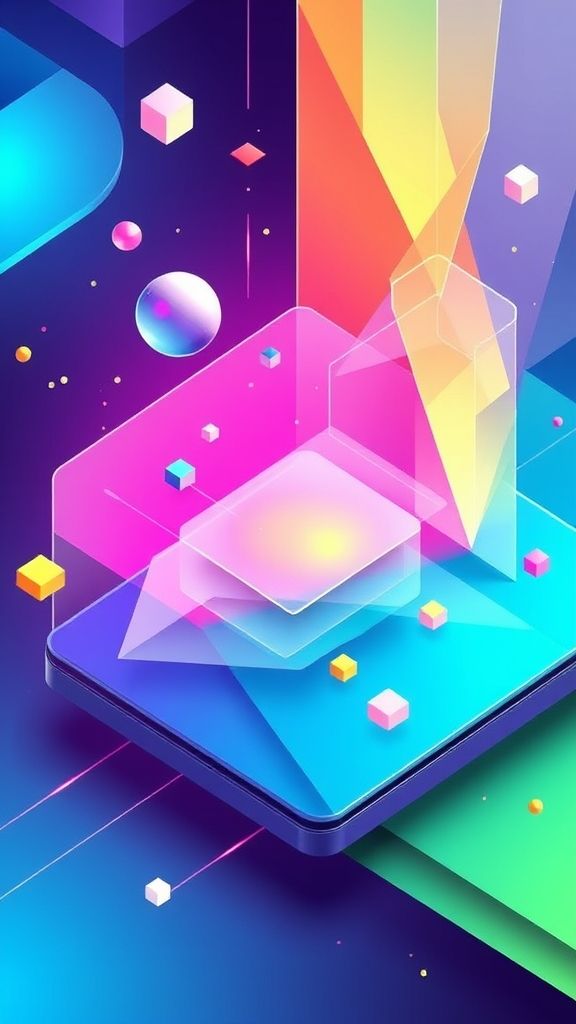Unlocking The Future Of Authentication: Mastering Passkeys With Googles Game-Changing Password Manager
Mastering Passkeys with Google Password Manager: A Comprehensive Guide In 2025, Google is taking a …
22. October 2025

Researchers have developed a new type of colour e-paper display that can showcase high-resolution video while minimizing energy consumption. This innovation has far-reaching implications for future smartphones and other devices, enabling them to offer vibrant, detailed visuals without draining batteries.
The concept of e-paper displays is rooted in the use of tiny molecules to create images. Unlike traditional LED screens, which emit red, green, and blue light to produce colour, e-paper screens rely on a different mechanism. In this case, researchers have employed tungsten oxide nanodiscs as pixels, each measuring approximately 560 nanometres in size. This resolution of 25,000 pixels per inch (PPI) is significantly higher than what is typically found in smartphones, which usually boast PPI values in the hundreds.
The key to creating colours with this e-paper display lies in the manipulation of light reflection by the tungsten-oxide nanodiscs. Each disc has a unique size and spacing that allows it to reflect a specific band of light. By combining these discs in a particular arrangement, researchers have successfully created a range of colours. Furthermore, the brightness of the displayed image can be adjusted by briefly applying an electrical pulse that displaces ions within the disc. Once a colour is set, the ions remain in place, ensuring that the image maintains its vibrancy without the need for continuous power.
The benefits of this new e-paper display extend beyond its impressive technical capabilities. Researchers created a small device measuring just 1.9 millimetres by 1.4 millimetres – roughly 1/4000th the size of a typical smartphone display. This tiny screen was used to display a 4300-by-700 pixel crop of Gustav Klimt’s The Kiss, an image with an extremely high resolution for such a compact device.
One of the most significant advantages of this new e-paper technology is its ability to refresh images at a rapid pace. With a refresh rate of approximately every 40 milliseconds, it is capable of displaying video content without significant lag or delay. This level of responsiveness is essential for smooth video playback and enables users to enjoy their favourite movies and TV shows on the go.
The energy efficiency of this e-paper display is another noteworthy feature. According to researchers, the device uses around 1.7 milliwatts per square centimetre when displaying video, with even lower power consumption for still images. This significant reduction in energy usage has major implications for battery life and overall user experience.
Jeremy Baumberg, a researcher at the University of Cambridge, highlights the significance of this work: “What I like about this research is that it achieves both speed and efficiency, allowing users to enjoy fast-paced video content while minimizing battery drain. This is because once elements are switched, they remain in place without requiring continuous refreshment.”
As this innovative technology continues to evolve, we can expect to see its integration into future smartphones and other devices. The prospect of enjoying vibrant, high-resolution visuals on a device that consumes minimal energy is an exciting development, with potential applications extending far beyond the realm of consumer electronics.
The development of colour e-paper displays represents a significant breakthrough in display technology. With its potential to revolutionize the way we consume visual content, this innovation has the power to transform our mobile devices into powerful tools for entertainment, education, and communication. The future of smartphones and other devices looks bright with this technology, offering users an enhanced visual experience without sacrificing battery life.
The implications of this technology go beyond consumer electronics. Researchers are also exploring its potential in fields such as healthcare, where real-time image display can be crucial. Additionally, the reduced energy consumption could lead to significant environmental benefits, making it a sustainable choice for future devices.
As we move forward with the integration of colour e-paper displays into our daily lives, it is essential to consider the broader implications of this technology. With its potential to transform the way we interact with visual content, researchers and developers are working tirelessly to ensure that these innovations benefit society as a whole.